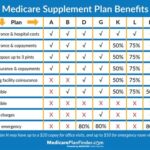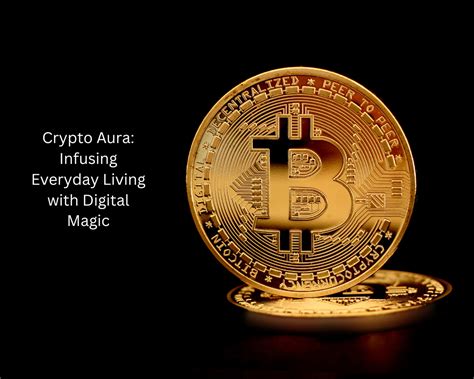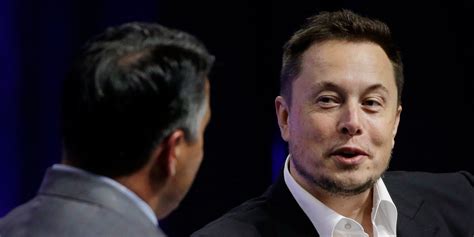
Mark Cuban is advocating for a radical shift in U.S. healthcare, proposing a move away from traditional insurance premiums towards a cash-pay system for routine medical services, arguing it could drive down costs and increase transparency.
Billionaire entrepreneur Mark Cuban has once again waded into the complex waters of U.S. healthcare, this time championing a disruptive model that could potentially reshape how Americans access and pay for medical services. Cuban’s proposal centers on transitioning away from the current insurance-premium-based system for everyday healthcare needs and embracing a cash-pay model, a concept he believes can inject transparency, competition, and ultimately, lower costs into the market.
In a recent interview, Cuban articulated his vision, emphasizing the inefficiencies and opacity embedded within the current healthcare landscape. He argues that the convoluted processes of insurance billing, negotiations with providers, and administrative overhead significantly inflate the cost of even routine medical procedures.
“The reality is for your basics, for your predictable healthcare needs, your doctor, your labs, your imaging, the cash price is almost always cheaper, sometimes dramatically so,” Cuban stated.
Cuban’s assertion is rooted in the idea that direct cash payments eliminate the need for insurance intermediaries, thereby reducing administrative burdens and allowing consumers to directly negotiate prices with healthcare providers. This approach, he contends, fosters price transparency and empowers patients to make informed decisions about their healthcare spending.
The cash-pay model, while not entirely novel, has gained traction in recent years as a potential alternative for individuals with high-deductible health plans or those seeking services not covered by their insurance. Proponents argue that it offers several key advantages, including lower costs for certain procedures, greater price transparency, and more direct relationships between patients and providers.
Cuban’s advocacy for this model is not entirely surprising, given his previous ventures in the healthcare sector. He is the founder of Cost Plus Drugs, an online pharmacy that offers prescription medications at significantly lower prices by cutting out middlemen and negotiating directly with manufacturers. This experience, he suggests, has provided him with firsthand insight into the potential for disruption in the healthcare market.
However, Cuban acknowledges that transitioning to a cash-pay system for all routine healthcare needs would require significant changes to the existing infrastructure and regulatory framework. He envisions a system where patients can easily compare prices for various procedures and services, choose providers based on both quality and cost, and pay directly for their care without the complexities of insurance billing.
The proposal has sparked debate among healthcare experts and policymakers, with some praising its potential to address rising healthcare costs and improve transparency, while others raise concerns about its impact on access to care for low-income individuals and those with chronic conditions.
One of the primary criticisms of the cash-pay model is that it could exacerbate existing disparities in healthcare access. Critics argue that individuals with limited financial resources may be unable to afford upfront cash payments, potentially delaying or forgoing necessary medical care.
Cuban addresses this concern by suggesting that safety nets and subsidy programs could be implemented to ensure that low-income individuals have access to affordable healthcare. He also emphasizes that the cash-pay model is not intended to replace insurance entirely, but rather to supplement it by providing a more affordable option for routine medical needs.
Another challenge lies in convincing healthcare providers to embrace the cash-pay model. Many providers are accustomed to the guaranteed revenue streams provided by insurance companies and may be reluctant to shift to a system where they rely on direct payments from patients.
Cuban believes that the potential for increased patient volume and reduced administrative costs could incentivize providers to adopt the cash-pay model. He also suggests that technology could play a role in streamlining the payment process and making it easier for patients to compare prices and schedule appointments.
The long-term viability of Cuban’s proposal remains to be seen. However, it has undoubtedly injected a new perspective into the ongoing debate about healthcare reform in the United States. By challenging the conventional wisdom and advocating for a more transparent and consumer-driven approach, Cuban is pushing the boundaries of what is considered possible in the healthcare industry.
In-Depth Analysis of Mark Cuban’s Healthcare Proposal
Mark Cuban’s push for a cash-pay healthcare model represents a fundamental challenge to the established norms of the American healthcare system. While the idea of paying directly for services may seem straightforward, its implementation and potential impact are complex and far-reaching. To fully understand the implications of this proposal, it’s essential to delve into the underlying issues driving the call for change, the specific mechanisms of the cash-pay model, and the potential benefits and drawbacks it could bring.
The Roots of the Problem: Healthcare Costs and Transparency
The United States consistently ranks among the highest in the world in terms of healthcare spending per capita, yet its health outcomes often lag behind those of other developed nations. This discrepancy highlights the inefficiencies and systemic issues that plague the American healthcare system.
One of the primary drivers of high healthcare costs is the complex web of insurance billing, negotiations between providers and insurers, and the associated administrative overhead. These processes add significant layers of cost without necessarily improving the quality of care. The lack of price transparency further exacerbates the problem, as patients often have little or no idea how much a particular procedure or service will cost until after they have received it.
Cuban’s proposal directly addresses these issues by advocating for a system where patients can directly compare prices for healthcare services and pay for them upfront in cash. This approach eliminates the need for insurance intermediaries, reducing administrative burdens and fostering competition among providers.
How the Cash-Pay Model Works
In a cash-pay healthcare system, patients pay directly for medical services at the time of service, without involving insurance companies. This model can take several forms, including:
- Direct Primary Care (DPC): Patients pay a monthly or annual fee to a primary care physician in exchange for a range of services, such as routine checkups, consultations, and basic medical care. This model often emphasizes preventive care and building strong relationships between patients and providers.
- Fee-for-Service Cash Pay: Patients pay a set fee for each individual service they receive, such as a doctor’s visit, lab test, or imaging procedure. This model allows patients to choose which services they need and pay only for those services.
- Bundled Pricing: Providers offer a single price for a package of services, such as a pregnancy and delivery package or a joint replacement surgery. This model provides greater price transparency and allows patients to budget for their healthcare expenses.
In all of these models, the key is that patients have a clear understanding of the price of the service before they receive it, and they pay directly to the provider without involving an insurance company.
Potential Benefits of the Cash-Pay Model
- Lower Costs: By eliminating the administrative overhead associated with insurance billing, the cash-pay model can potentially drive down the cost of healthcare services. Providers may be willing to offer lower prices to patients who pay in cash, as they avoid the complexities and delays of dealing with insurance companies.
- Increased Transparency: The cash-pay model promotes price transparency by requiring providers to disclose their prices upfront. This allows patients to compare prices and make informed decisions about their healthcare spending.
- Greater Choice: Patients in a cash-pay system have more freedom to choose their providers based on both quality and cost. They are not limited to providers within a particular insurance network.
- Stronger Patient-Provider Relationships: By eliminating the insurance intermediary, the cash-pay model can foster stronger relationships between patients and providers. Providers can spend more time focusing on patient care and less time dealing with administrative tasks.
- Reduced Administrative Burden: The cash-pay model significantly reduces the administrative burden for both providers and patients. Providers no longer have to deal with the complexities of insurance billing, and patients no longer have to navigate the confusing world of insurance claims and deductibles.
Potential Drawbacks of the Cash-Pay Model
- Access to Care for Low-Income Individuals: One of the primary concerns about the cash-pay model is that it could exacerbate existing disparities in healthcare access. Individuals with limited financial resources may be unable to afford upfront cash payments, potentially delaying or forgoing necessary medical care.
- Coverage for Catastrophic Events: The cash-pay model is not designed to cover major medical events, such as serious illnesses or injuries that require hospitalization or surgery. Patients would still need to rely on insurance to cover these types of expenses.
- Provider Acceptance: Convincing healthcare providers to embrace the cash-pay model may be a challenge. Many providers are accustomed to the guaranteed revenue streams provided by insurance companies and may be reluctant to shift to a system where they rely on direct payments from patients.
- Lack of Regulation: The cash-pay healthcare market is currently largely unregulated, which could potentially lead to abuses and exploitation of patients. It is important to establish clear standards and regulations to protect patients and ensure that they receive high-quality care.
- Potential for “Balance Billing”: In some cases, even with cash pay, there might be instances where the provider charges more than what the insurer deems “reasonable and customary,” leading to “balance billing” where the patient is responsible for the difference, although this is typically more of an issue with out-of-network insurance situations.
The Role of Technology
Technology could play a crucial role in facilitating the adoption of the cash-pay healthcare model. Online platforms and mobile apps could be used to:
- Compare Prices: Allow patients to easily compare prices for various procedures and services across different providers.
- Schedule Appointments: Enable patients to schedule appointments directly with providers online.
- Process Payments: Facilitate secure and convenient online payments.
- Manage Medical Records: Provide patients with access to their medical records and allow them to share their information with providers.
Overcoming the Challenges
To successfully implement a cash-pay healthcare model, it is essential to address the potential drawbacks and overcome the challenges. Some possible solutions include:
- Safety Net Programs: Implementing safety net programs to ensure that low-income individuals have access to affordable healthcare. These programs could provide subsidies or vouchers to help patients pay for cash-pay services.
- Regulation and Oversight: Establishing clear standards and regulations to protect patients and ensure that they receive high-quality care. This could include licensing requirements for providers, price transparency mandates, and dispute resolution mechanisms.
- Incentives for Providers: Providing incentives for providers to adopt the cash-pay model. This could include tax breaks, grants, or technical assistance.
- Public Education: Educating the public about the benefits and limitations of the cash-pay model. This could help patients make informed decisions about their healthcare options.
- Integration with Insurance: Exploring ways to integrate the cash-pay model with existing insurance plans. For example, patients could use their health savings accounts (HSAs) to pay for cash-pay services.
The Future of Healthcare: A Hybrid Approach?
It is unlikely that the United States will transition to a purely cash-pay healthcare system in the near future. However, it is possible that a hybrid approach, combining elements of both the traditional insurance-based system and the cash-pay model, could emerge.
In this hybrid system, patients could use insurance to cover major medical events and rely on the cash-pay model for routine medical needs. This would allow them to take advantage of the lower costs and greater transparency of the cash-pay model while still having access to the financial protection of insurance.
Mark Cuban’s proposal has sparked an important conversation about the future of healthcare in the United States. While the cash-pay model is not a panacea, it offers a potential solution to some of the most pressing problems facing the healthcare system. By embracing innovation and challenging the status quo, the United States can move towards a healthcare system that is more affordable, transparent, and patient-centered.
FAQ: Mark Cuban’s Cash-Pay Healthcare Proposal
1. What exactly is Mark Cuban proposing for healthcare?
Mark Cuban is advocating for a shift away from relying on traditional insurance premiums for routine medical services like doctor visits, lab tests, and imaging. Instead, he suggests a cash-pay model where patients pay directly for these services, arguing this would increase price transparency and reduce costs by eliminating the complexities of insurance billing. “The reality is for your basics, for your predictable healthcare needs, your doctor, your labs, your imaging, the cash price is almost always cheaper, sometimes dramatically so,” Cuban stated.
2. How would a cash-pay system lower healthcare costs?
The primary way a cash-pay system aims to lower costs is by removing the administrative overhead associated with insurance billing and negotiations. When providers don’t have to deal with insurance companies, they can potentially offer lower prices to patients who pay directly. Competition among providers would also be encouraged, as patients would be able to easily compare prices and choose the most affordable option.
3. What are the potential benefits of a cash-pay healthcare model?
Beyond lower costs, the potential benefits include increased price transparency (patients know the cost upfront), greater choice of providers (not limited to insurance networks), stronger patient-provider relationships (less administrative burden), and reduced administrative hassles for both patients and doctors.
4. What are the major concerns about a cash-pay system, especially for low-income individuals?
The most significant concern is access to care for those with limited financial resources. If patients need to pay upfront in cash, it could create a barrier to necessary medical care for low-income individuals who may not be able to afford it. Solutions would need to be implemented to ensure equitable access.
5. How does Cost Plus Drugs, Mark Cuban’s online pharmacy, relate to this healthcare proposal?
Cost Plus Drugs demonstrates Cuban’s belief in disrupting the healthcare market by cutting out middlemen and negotiating directly with drug manufacturers to offer medications at significantly lower prices. This experience informs his broader vision of applying similar principles of transparency and direct payment to other areas of healthcare. It shows that a direct-to-consumer model can work and lower costs.
6. What are the potential challenges for Healthcare Providers to adopt the Cash-Pay Model?
There is a guaranteed revenue stream for healthcare providers who accept insurance companies and payment from them. Providers are accustomed to receiving money from insurance companies with their billing and negotiation processes and can be hesitant or reluctant to rely on the patient paying them directly.
7. How can technology help implement the cash-pay model?
Technology is necessary in order for the cash-pay model to be widely used. Technology solutions can include a platform to compare prices between the various providers, scheduling appointments to see the providers, facilitate secured payments and to maintain medical records.
8. How do the Safety Net Programs address access to healthcare with low-income patients?
The Safety Net Program can help low-income patients access healthcare at a price they can afford. They would provide vouchers and subsidies to help the patients pay for healthcare.
9. How can we ensure high-quality care if we do not have proper Regulation and Oversight of the Cash-Pay Model?
Regulations will need to be implemented such as licensing requirements, price transparency mandates and a way for dispute resolution to ensure the healthcare providers follow protocol and standards.
10. What are the differences between Direct Primary Care (DPC) and the Fee-for-Service Cash Pay?
Patients pay a monthly or annual fee to a primary care physician in exchange for a range of services such as consultations, check-ups, and medical care with DPC. On the other hand, the Fee-for-Service Cash Pay patients pay a set fee for each medical service, such as lab tests, imaging procedures, or a visit to the doctor.









